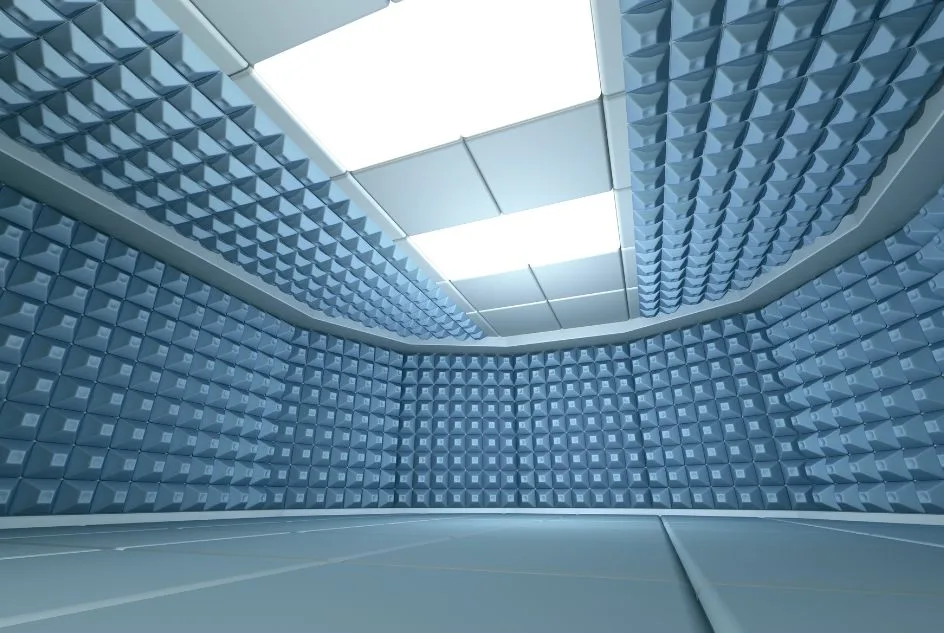The quest for tranquility within a constructed space begins with an understanding of soundproofing fundamentals.
Soundproofing in construction is not merely an additive feature; it’s an intricate aspect of architectural planning, significantly impacting the quality of life for occupants.
This process involves meticulous strategies to mitigate the transmission of both airborne and structure-borne noises.
Airborne noise, such as conversations or music, travels through the air, while structure-borne noise, exemplified by footsteps or machinery vibrations, transmits through building materials.
An effective soundproofing plan integrates materials and design techniques to address these noise types, ensuring a serene and productive environment.

Key Soundproofing Materials
Delving into the realm of soundproofing materials unveils a variety of options, each with unique properties and applications.
Key materials include mass-loaded vinyl (MLV), a heavy, yet flexible material excellent for blocking airborne sounds; acoustic foam, which absorbs sound waves, reducing echo and reverberation; and fiberglass insulation, a cost-effective option for reducing sound transmission through walls and ceilings.
Additionally, soundproof drywall and acoustic panels offer enhanced noise reduction capabilities. Each material serves a specific purpose, whether it’s dampening sound vibrations in floors, walls, and ceilings or absorbing echoes in large, open spaces.
Understanding these materials’ characteristics is crucial in selecting the right combination for specific soundproofing needs.
Strategies for Effective Soundproofing in New Constructions
In new construction projects, soundproofing strategies should be integrated from the ground up.
This integration begins with the blueprint, where room layout, material selection, and construction techniques are all tailored to minimize noise pollution.
Utilizing staggered or double stud walls can dramatically reduce sound transmission between rooms.
Incorporating resilient channels or sound clips in wall and ceiling assemblies further enhances sound dampening.
These strategies, combined with careful material selection, lay the groundwork for a building that prioritizes acoustic comfort alongside aesthetic and structural integrity.
Retrofitting Existing Structures
Retrofitting existing structures with soundproofing solutions presents unique challenges and opportunities.
The key is to identify the most problematic areas for noise transmission and address them with targeted solutions.
Installing additional layers of drywall with sound-dampening compounds, sealing gaps around doors and windows with acoustic sealants, and using decorative acoustic panels can significantly improve a building’s sound insulation.
In some cases, structural modifications, such as adding mass to walls or installing suspended ceilings, may be necessary.
These interventions, while sometimes complex, can transform an acoustically flawed space into a haven of quietude.
Balancing Acoustic Performance and Aesthetic Appeal in Material Choice
The choice of soundproofing materials must strike a balance between functionality and aesthetics.
Modern soundproofing solutions offer a range of textures, colors, and finishes, enabling them to blend seamlessly with or even enhance interior designs.
For instance, acoustic panels and tiles are available in various designs, doubling as decorative elements while providing sound absorption.
Similarly, soundproof curtains and carpets combine practicality with style, offering an unobtrusive method to reduce noise levels.
This dual focus ensures that the pursuit of acoustic perfection does not compromise the visual appeal of the space.
Cost-Benefit Analysis of Various Soundproofing Materials
A comprehensive cost-benefit analysis of soundproofing materials is crucial for informed decision-making.
While some materials may offer superior soundproofing qualities, their cost and installation complexity must be weighed against the intended use and budget constraints.
For example, while MLV offers excellent sound insulation, its cost may be prohibitive for large-scale applications.
In contrast, materials like acoustic foam provide a more budget-friendly option, though with a potentially lesser degree of sound isolation.
Understanding these trade-offs assists in selecting materials that offer the best balance of performance and cost-effectiveness for a specific project.
Future Trends in Soundproofing: Innovations and Developments
Looking ahead, the field of soundproofing materials is poised for innovative advancements.
Research is focused on developing materials that are not only more effective in noise reduction but also environmentally friendly and sustainable.
Innovations like sound-absorbing biodegradable materials, smart acoustic solutions that adapt to ambient noise levels, and integration of soundproofing elements into building automation systems represent the future of noise control in construction.
These developments promise to make soundproofing more efficient, sustainable, and integral to the building process, further enhancing our ability to create serene, noise-free environments.
Read more https://londonsoundproofingpro.co.uk






